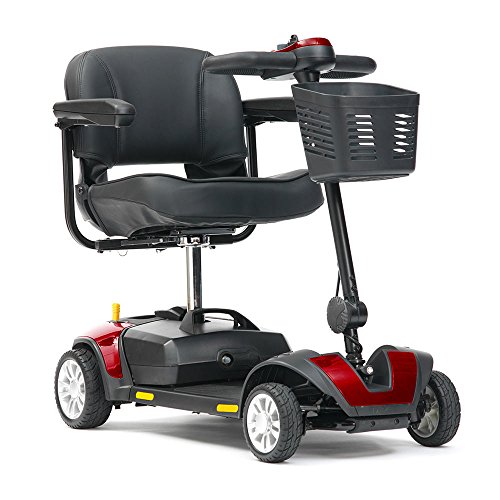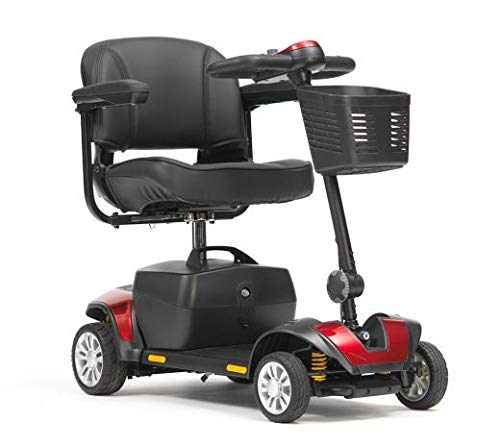The 10 Most Scariest Things About Mobility Scooter Road Or Pavement
Elwood
2024.07.29 11:16
38
0
본문
 Mobility Scooter Road Or Pavement
Mobility Scooter Road Or PavementMobility scooters can be used on roads, provided they are used in a manner that is legal. However, they are not driven on motorways or bus lanes.
As with all vehicles, riders must adhere to traffic laws and obey pedestrian traffic signals. Safety is essential, so riders are advised to wear a helmet and ensure that their scooters have appropriate lighting to ensure visibility.
Sidewalks and Pedestrian Walkways
Many cities, towns, and states have different laws regarding mobility scooters used on sidewalks or pedestrian pathways. In general, these laws are meant to help protect pedestrians from scooter drivers who fail to pay attention to their surroundings or operate at unsafe speeds. These laws encourage people to use scooters responsibly and with care and show respect for other users in public spaces.
On sidewalks the speed limit is usually set so that it corresponds to the speed of pedestrians in the vicinity. The reason for this is because people who are older or disabled tend to walk slower than those who are healthy and young. Someone who is driving their scooter at a rapid speed could injure or even cause death to an older person if they crash into them.
In certain areas scooters are not permitted in certain areas operating on sidewalks, and users are being required to use bike lanes or the main road. This is because roads are designed specifically for motorized vehicles, while the sidewalks are not. A person who rides an electric scooter on the sidewalk is not protected from the weather or traffic.
This law can also make people feel unsafe as it forces them to change their routes. This is particularly relevant for seniors who rely on their scooters as their primary means of transportation. Having to take alternative routes can be extremely frustrating for them, and could cause them to give up their scooters altogether, reducing their independence.
If you are worried about how to use your mobility scooter in urban areas, it is best to contact your local city's government or homeowner's association (HOA) to find out more about the rules for operating these devices within your neighborhood. In some cases, they might have certain requirements such as lighting or reflective materials and making sure that you are visible to other pedestrians during nighttime or in low-light conditions. Moreover, they might recommend that you park your scooter in designated parking spaces and avoid blocking intersections or walkways. Additionally, they might ask you to wear appropriate safety gear such as reflectors and helmets in order to avoid injuries or accidents.
Roadways
To keep people safe and to prevent accidents, municipalities have guidelines for the mobility scooters' use on roads. It may be uncomfortable for users of mobility scooters to see that they are not permitted on roads, but it's to protect their safety. Mobility scooters were developed to be only used on pedestrian walkways or sidewalks. They aren't able to handle the speed and traffic of roads. This can cause congestion and slow the flow of traffic, which is hazardous for mobility scooters and other vehicles on the road.
To be able to travel on roads, a scooter needs to be class 3 or higher. This means that it has the maximum speed of 8 mph and is equipped with a powerful brake system, lights, rear view mirrors and a horn. If a scooter doesn't meet these requirements it's illegal to operate on roads.
Some scooters can still be driven on roads at speeds up to 4 miles per hour. However, this is not recommended. Traveling at this speed can cause the scooter to become unstable and difficult to control. It's also important to keep in mind that the driver must be trained on how to handle the scooter on a road prior to trying this.
The most important aspect of driving a scooter on the road is that the user must consider the safety of others first. This includes cyclists and pedestrians as well as other road users. It is important to maintain a speed that is in accordance with the surrounding conditions and pedestrian traffic. Always wear a helmet to improve visibility and protection.
Mobility scooters have become a vital part of a lot of people's lives. However, it is important to be aware of the laws and regulations that govern their use. In addition to the state and municipality-specific laws, local communities might have their own ordinances regulating the use of scooters. This is particularly applicable if you live in a neighborhood that has an association for homeowners, which might have its own set of restrictions regarding the use of scooters. Be sure to check the rules in your area to avoid penalties and fines.
Grasslands
The idea of being able to drive your mobility scooter on grass may seem appealing, but this isn't always the best surface for this type of vehicle. Typically, grasslands have a lot of gravel, stones, and hard rock underneath the surface that could cause damage or get you stuck. The ground may also be muddy and wet due to rain or water. These conditions are not ideal for scooters, as they have a narrow ground clearance, which means that driving over them can make the scooter unstable, or even lose control.
All-terrain models are suggested for those who plan to use their scooters on surfaces other than paved ones. These types of models are made for individuals who want to be able to travel over a variety of different surfaces including grass. These types of pavement scooters usually come with larger wheels and motors that are more powerful, which are capable of handling rough terrain. This gives people who are unable to walk to enjoy a range of outdoor activities, broadening their horizons and making them more independent.
If you're interested in this type of mobility scooter, it's recommended to visit a showroom or shop that is specifically in these products and can show you how they are designed to be used on a variety of outdoor surfaces. This is the best way to learn the way a scooter can be operated on various outdoor surfaces, like on grass, and what are its limits.
It is crucial to remember that you can only take an approved class three scooter on the road, whereas other types of scooters should be kept off of roads and reserved for the time they need to cross roads. The documentation or the retailer that comes with your scooter will provide you with a basic guidance on what outdoors surfaces are suitable for this type of mobility scooter, however it varies from country to country.
You can continue to enjoy your favorite hobbies by using the right mobility scooter. For example, you can go to an event or spend time with your children. You can also take your dog for a stroll. It is also possible to go to the county grounds for a cricket game or an annual fair.
Rough Terrains
If you are a frequent participant in outdoor excursions, or you live in an area with rough terrain, a mobility scooter designed for dirt or gravel trails can be a lifesaver. These specialized mobility scooters have larger motors and tires for greater stability and comfort on difficult terrains. These power scooters also have advanced suspension systems that absorb the impact of bumps or inclines. These tough models allow you to effortlessly navigate around obstacles and ride over sand.
Some mobility scooters are able to be used on grass, but long-term use on grass can damage the vehicle. A decision to purchase an all-terrain scooter with air-filled tires that are large and a high-end suspension system will allow you to enjoy your favorite outdoor activities without worrying about damaging your mobility scooter. These specialized scooters are mobility scooters allowed on the pavement not mobile or foldable, and therefore they require more storage space than indoor models.
Rough terrain scooters can be used on various surfaces that include grass, gravel, and sand. They also have larger rear and front tires to ensure maximum traction and stability. In addition, the advanced suspension system helps to reduce vibration and discomfort. The scooters can travel of up to 30 miles on charge. They are ideal for running errands or for long trips.
You can easily regulate the speed or movement of a rough terrain scooter by shifting your body weight in the direction you are traveling. Leaning forward improves traction, while leaning backward improves stability when you are climbing or going down. It is also possible to maneuver corners by leaning your body and the scooter into turns.
Before you purchase a scooter for rough terrain, consider your specific lifestyle and needs. Consider how often you will be using the vehicle and what types of terrain you'll generally travel on. Compare brands and features in order to find the one that is most suitable for your budget and your lifestyle.
Raphael is a well-known mobility scooter expert who provides helpful information on a variety of models and features to help customers make an informed decision when buying. He strives to provide a stress-free purchasing experience for his customers by providing clear and honest information throughout the entire process.




댓글목록 0
댓글 포인트 안내